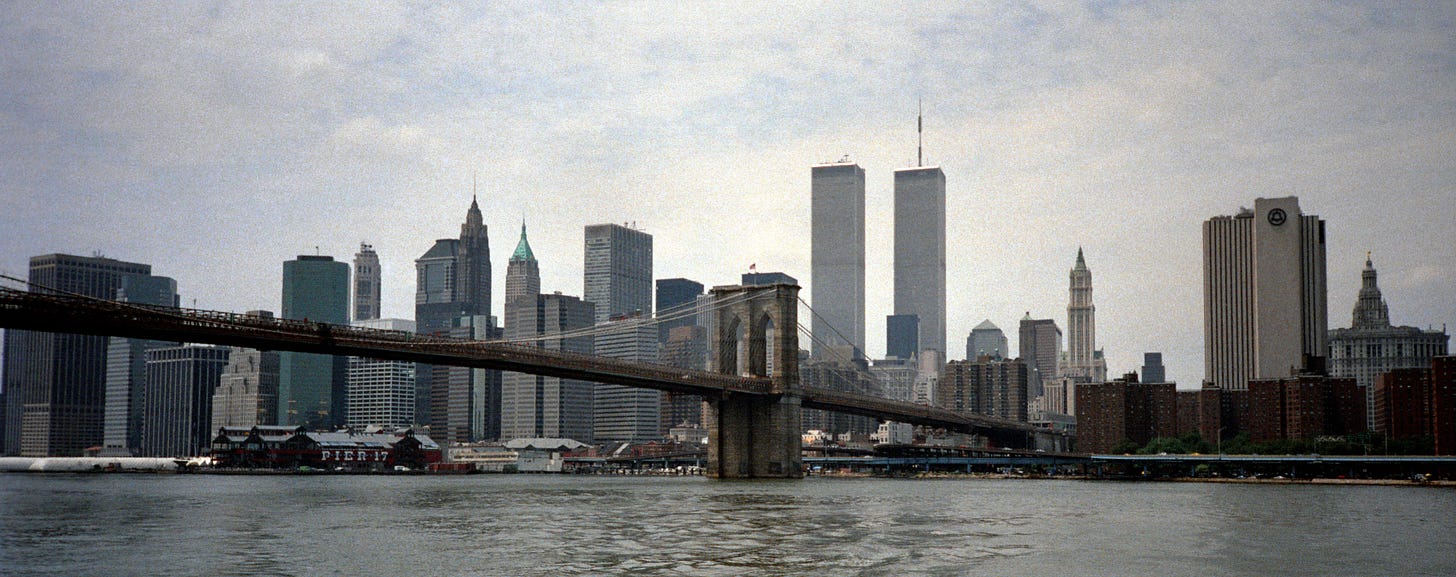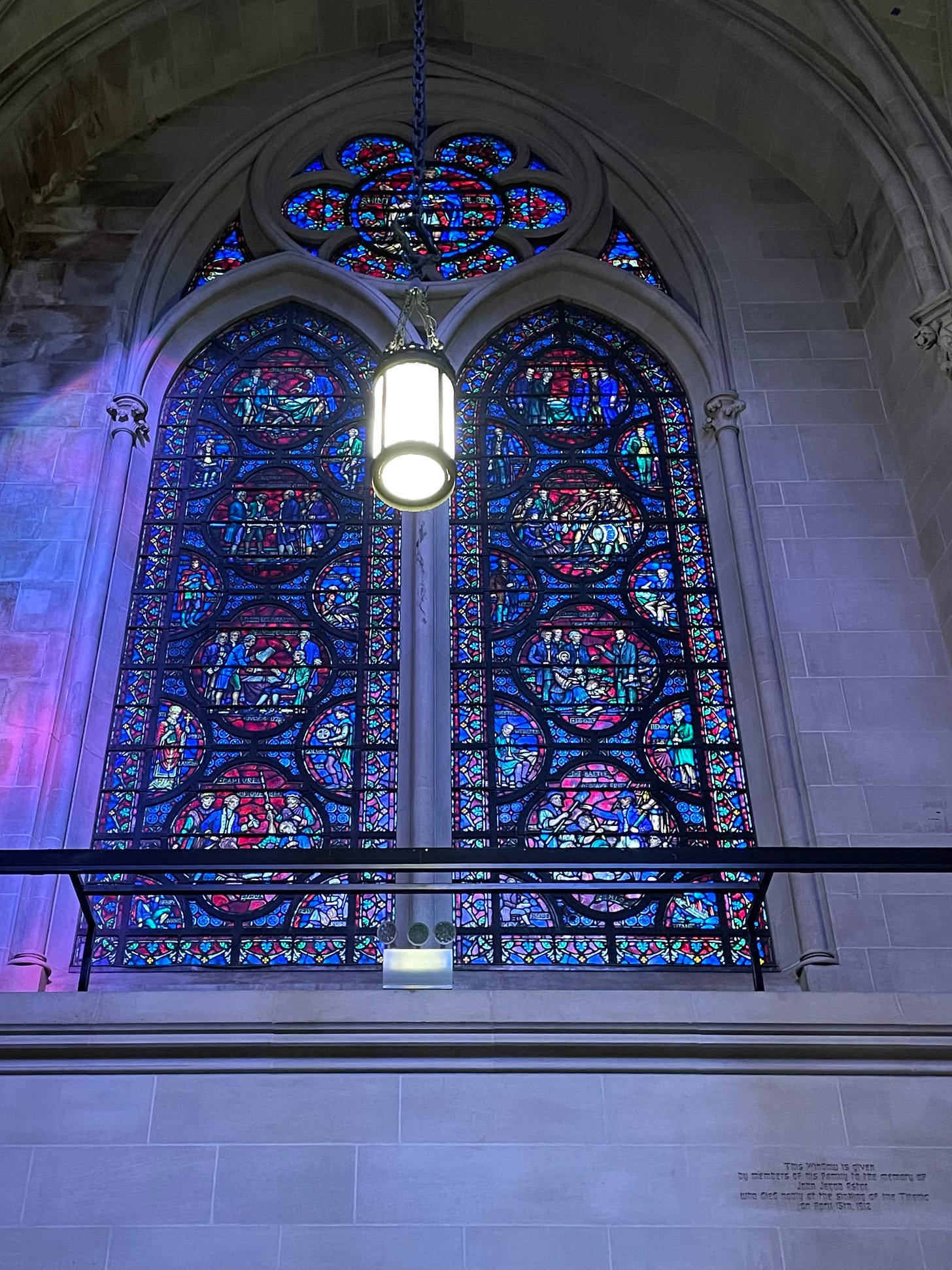One of my New Year’s resolutions this year is to visit memorials for tragedies that have occurred during my lifetime. I feel compelled to do this because I think a lot about grief and memory but most often for events I have no direct personal connection to. For example, as a teenager, I was swept up in the horror of the sinking of the Titanic as portrayed in James Cameron’s 1997 film. I shed many tears over the course of the five times I saw that movie in theaters, but what I experienced was a kind of vicarious grief brought on by considering human suffering at a time far removed from my own.
Where were you on September 11th?
Before the Covid pandemic completely disrupted life as I’d known it in 2020, I’d say the most personal and world alternating disaster I’d experienced was the terrorist attacks of September 11th that resulted in the collapse of the Twin Towers. I wasn’t in New York City at the time—can’t imagine what it would have been like to be there. Instead, I was at a small liberal arts college in Ohio, a few weeks into my freshman year and a couple of hours away from my family.
I didn’t see the attacks unfold in person, but I experienced the fallout of that day in real time: watching and rewatching the footage of the planes striking the towers, being caught up in the rumors of who was responsible and what else might have been attacked (a classmate told me there was smoke in the White House), sitting with a friend who was waiting to hear about a relative in New York City, praying for victims and rescue workers, wondering whether the world was going to fall apart around me.
All of this personal anxiety, fear, and grief came back to me when I visited the 9/11 Memorial and Museum in New York City in January of this year. What also dawned on me at the museum, over twenty years removed from the disaster, was how much the event shared in common with the tragedy whose remembrance had rocked me during my high school years, the sinking of the Titanic.
Symbols of wealth in pairs or trios
The Twin Towers were part of the World Trade Center complex and were an integral part of the New York City skyline. For three years, the North Tower held the record as the tallest building in the world before it was surpassed by the Willis (formerly Sears) Tower in Chicago.

Similarly, the Titanic, one of three Olympic-class ocean liners built for the White Star Line, was the largest passenger ship in the world at the time of its maiden (and final) voyage in 1912. The Titanic was slightly larger than its existing sister ship the Olympic and soon to be surpassed in size by its other sister ship, the Britannic.
It’s one thing to construct the largest building or ship in the world, but in the case of the Twin Towers and the Olympic-class ocean liners, the developers were building more than one of these gargantuan structures.
The opening of the Twin Towers and the debut of the Titanic were met with much fanfare, and before tragedy struck them both, they were globally recognized as symbols of wealth and opulence.
A cross section of society
Another common feature of the Titanic and the Twin Towers is that the occupants of these spaces, who would become victims of the disasters, represented a wide swath of society.
The World Trade Center housed offices for financial firms like Cantor Fitzgerald, a company that lost 658 employees on September 11th. Executives at firms like these were among the victims of the attacks but so were secretaries, janitors, mechanics, and food services staff. Also represented among the victims were first responders: firefighters, police officers, and EMTs.
This month, Char is writing about American third class passengers on the Titanic. Historically, not as much attention has been paid to their stories in comparison to American first class passengers like John Jacob Astor IV, one of the richest men in the world who also went down with the ship.
Both 9/11 and the Titanic disasters counted among their victims women and men, the young and old, and the poor and rich. In both cases, the loss of life echoed across the word because the victims hailed from many nations.
A call to remember
The 9/11 Memorial includes two large pools, situated inside the footprints of the former Twin Towers. At the center of these pools are fountains that pour down into what appear to be a bottomless wells. The names of the victims are engraved on plaques that surround the perimeter of the pools. Birthdays are acknowledged with a rose.
Inside the 9/11 Museum, the exhibition In Memoriam preserves the stories of those who lost their lives in the disaster. When I visited, I spent a long time sitting inside a darkened chamber where individual stories are relayed through photographs and audio recordings made by friends, colleagues, and family members of the victims.
It was in this part of the museum that I was most reminded of the Titanic, and the work of people like Edward Kamuda and my sister, Char, who preserve and share the stories of those who were on the Titanic.
Victims of September 11th and the sinking of the Titanic both met tragic ends, but their involvement in these incidents have inspired efforts to preserve the memory of their lives before they met their fate. Inside the 9/11 Museum there’s a massive art installation called “Trying to Remember the Color of the Sky on That September Morning” that includes this quote from Virgil:
“No day shall erase you from the memory of time.”








Great read, I love the window for Astor, I have never seen that!
(Getting to this late because I've been on the road this week and am just now catching up on everything.)
On September 11, 2001, I was working at Boston University, but it was only 3 months after I left a job working customer service for United Airlines at Logan Airport. My friends/former coworkers Jesus Sanchez and Marianne MacFarlane were on UA175, and I knew the people who worked the departure gate for the flight that morning, all of whom were utterly devastated by a sense of guilt even though there was no way they could've known what was to come. That day still haunts me, to the point where the only poem I worked on in all of 2022 was about my experience and connection to it. The poem's not online anywhere; it came out in Cream City Review, which is print-only, but I'm glad it's out in the world.